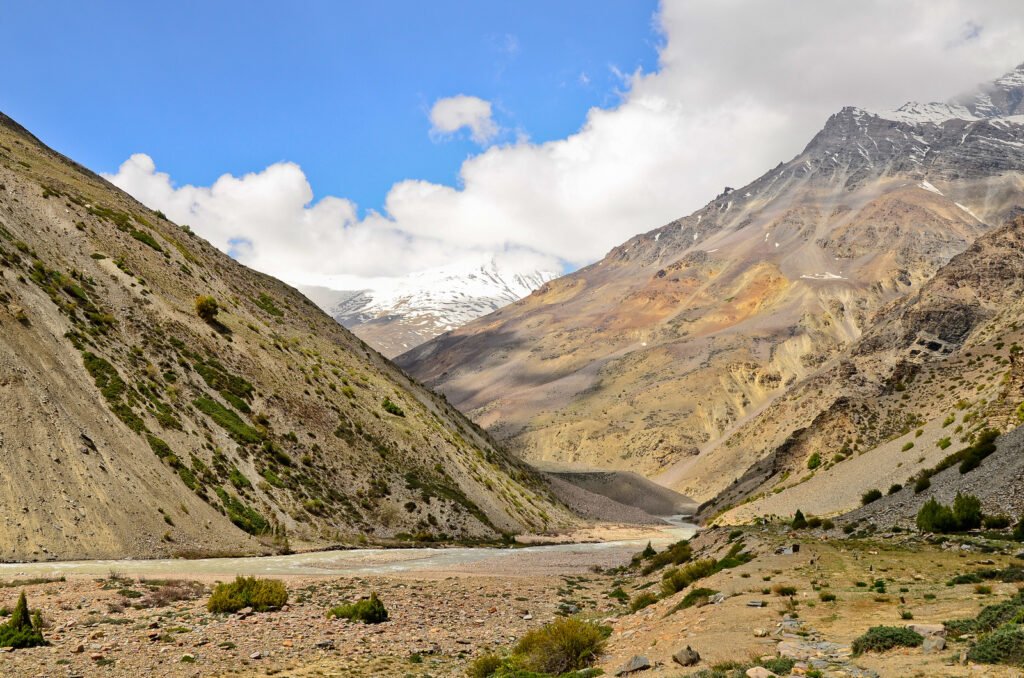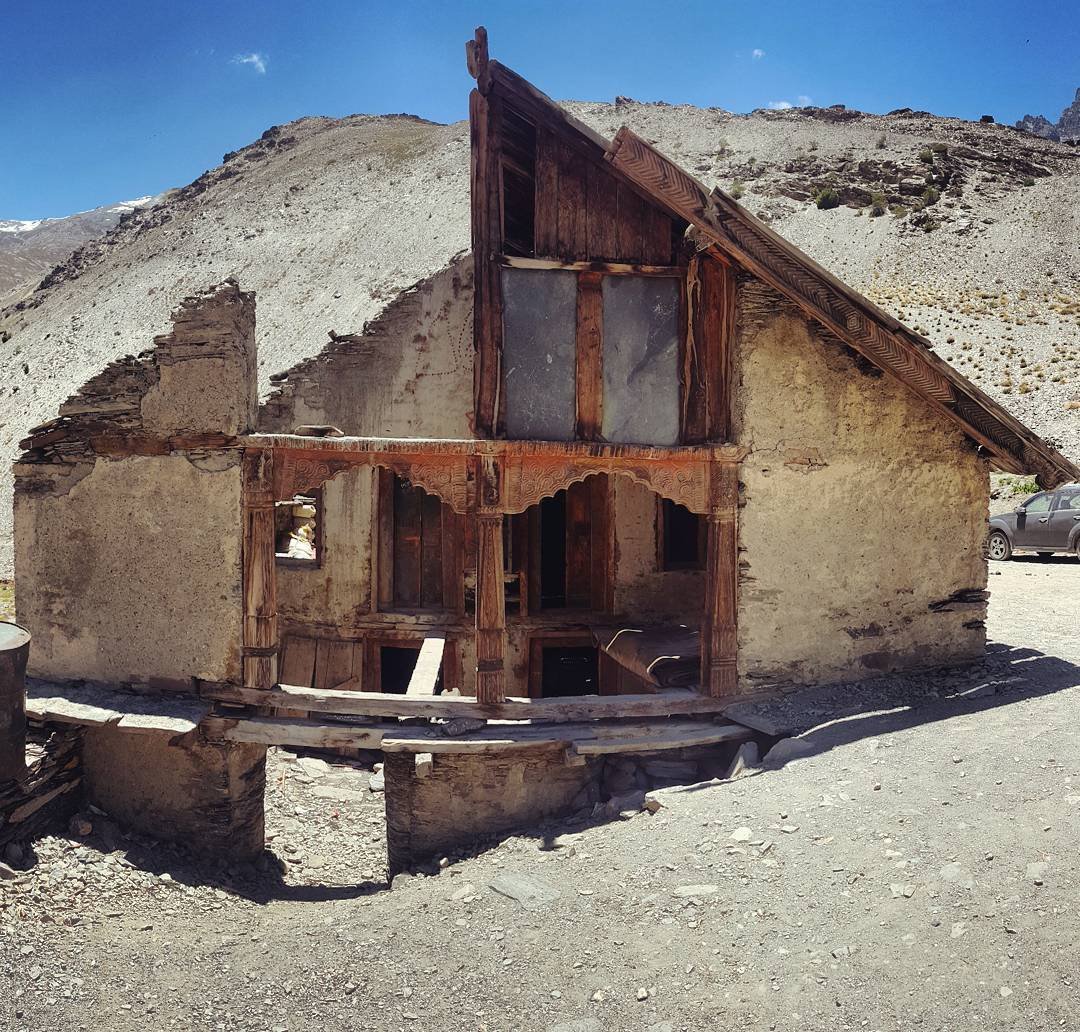Gangotri has always been my favorite place. The weather and peace there perfectly suit me. This time, I went to Gangotri in June 2024. While coming back to Dehradun, I saw the road that leads to Nelong Valley. Nelong Valley has always fascinated me, thinking about the time when the Jads of Nelong, Keelang, and Jadung Village were free to trade with Tibet. How would the time have been back then?
The shared culture between the Jads of Garhwal, Kinnaur, and Tibet would have been a sight to behold.
After countless hours of browsing, I found an interview with Jadh Mata Ji, which gave me a better idea of how they used to live their lives before the Sino-Indian War and how their lives changed after the war12.
Table of Contents

The Jadh Bhotiyas
The Jadh are a Bhotiya tribe living in Bagori, Harshil, and Dunda villages as of now. They are a semi-nomadic tribe, meaning they practice seasonal migration from Bagori to Dunda and other regions during the winter.3
Before the Sino-Indian War, the Jads of Garhwal and the Bushahr Kingdom used to trade with Tibet. They had a culture similar to Tibet’s and even marriage ties. But after the 1962 war, the Jads of Nelong and Jadung were evacuated and settled in Bagori village. Since then, they have been living in Bagori and other regions of Uttarakhand.
The Jadh were called Jadh Bhotiyas because of their proximity to Jadh Ganga (Jhanvi Ganga).
Their livelihood depended on trade ties with Tibet. There used to be barter trade where the Jadh sold sugar, grains, spices, and woolen products and brought back salt, borax, and ornaments.
The Jadh Bhotiyas speak languages like Jad, Garhwali and Hindi. Over time speakers of the Jad Language have shrunk and the language is now on the verge of getting lost. Old people of Bagori and Dunda still speak the Jad language but the newer generation doesn’t show any interest in the language.
After the war, trade was suspended, and the Jadh people shifted to agriculture and sheep rearing. However, over time, many families have given up sheep rearing due to various factors such as climate change, lack of grazing meadows, and reserved forest allocation. Now, only a few families continue sheep rearing, while most are into agriculture and other occupations. The younger generations, on the other hand, have migrated to cities and towns like Uttarkashi, Dehradun, and Rishikesh for better opportunities.
The lack of economic opportunity for the Jad people is leading to the fading of their culture and customs. These circumstances are leading to migration which in turn means lost culture, language, and customs.
Jadung Village
From Bhairoghati, there’s a road (NH134A) that leads to Nelong Valley. To enter the Valley, one needs to get a Nelong Valley Permit from the SDM Uttarkashi office as this is an Inner Line Area.
Nelong Village is 22 km from Bhairoghati, and Jadung Village (3,824 m/12,547 ft) is 16 km from Nelong Village. People are only allowed to go as far as Nelong Check Point if they have an Inner Line Permit. Permits for Jadung are only given in special cases.
Jadung village was inhabited by Jad Bhotiyas before the Sino-India war and the Jaad Ganga flows alongside the village.
“Next morning we had a lovely walk roaming through the ruins of the abandoned village of Jadung. There are 30 odd houses in the village. The remains of the life of a people who used to live there could almost be smelt and touched. The pillars with fine woodwork, the cold stoves and smokeless chimneys and the empty granaries told a story of a time gone by.” – The Jadung Exploration, June 2013 Ashutosh Mishra

History
On the internet, you will find resources related to Fredric Wilson and the Jadh people. For example, on Wikipedia, it’s mentioned that Wilson settled the Jadh from the Bushahr state to Nelong around 18494.
However, J.B. Fraser documented the winter migration of the Jadh to Harshil in 1815. Then, in 1819, Lt. Herbert reached Nelong. He mentioned that the locals of Nelong and Jadung villages were wary of him and discouraged him from exploring further towards Tibet.
All these scenarios are understandable, but I can’t seem to find more resources related to the rehabilitation of the Jadh by Wilson. J.B. Fraser and Lt. Herbert documented the Jadh people in Harshil and Jadung in 1815 and 1819, respectively. Why, then, is the word “rehabilitation of Jadung” used for the year 1849 by Fredric Wilson? Did the people of Jadung leave the place at that time that it needed rehabilitation? Did Wilson settle some Jadh people from the Baspa Valley to the Nelong Valley for border security purposes?
The people of Jadung and Nelong Valley also find their connection to the 52 Garhs of Garhwal. As known by historians, Garhwal was divided into various Garhs and Garhis before 1358. Ajay Pal united all the 52 Garhs and formed the Kingdom of Garhwal. If you look at the list of 52 Garhs, you will find the mention of Gartang Garh among all the other Garhs. Gartang Garh was administered by the Jadh people. If this is the case, then it means the Jadh people were in the valley as early as the 1300s5. More research material is needed to get a better idea of Jadh’s history. Currently, Gartang Gali is there in the valley which shares its name with Gartang Garh.
Culture and Religion of the Jadh
The Jadh people seem to follow both Hinduism and Buddhism. If you ever go to Bagori village, you will find the temple of Lal Devta and a Buddhist Temple (Tsechen Khakhyab Ling) at the entrance6. “Our original religion is Buddhism but we follow both (Hinduism and Buddhism). We worship Lord Rama and Shiva equally, as we do the Dalai Lama.” – Said Champal Singh (Age 90) during an interview in 19967.


Places dedicated to Lal Devta can also be found en route to Kayar Koti Bugyal and Jadung Village. This shows that Lal Devta is highly revered by the Jadh people.
Jads also worship the Ringali Devi, Five Pandavas, Draupadi Devi, Nagni Devi, and Someshwar Devta. During various occasions, local deities are worshipped with Jagar, and Pandav Nritya is performed with Dhol Damau and Ranshingha.
In Dunda village, the Jadh people have accepted Nagni Devi as their guardian deity. Similarly, in Harshil and Bagori, they have accepted Someshwar Devta as their guardian deity. Someshwar Devta is famous in the Yamuna and Ganga valleys. People from all over the Sankri Valley to the Taknaur Valley worship Someshwar Devta. During summers guardian deities, Ringali Devi, and Someshwar Devta are brought to Bagori and once the winter starts people descend down to Dunda with their deities also8.


Once a year, the people of Jadung are allowed to go to their village where they worship their deity. From the photos I saw, people were carrying the Someshwar Devta Doli. So the story goes like this, when the people of Jadung were evacuated to Bagori and Dunda they brought their deities with them, Ringali Devi and Someshwar Devta. However, the Guardian deity of Nelong Valley and Jadung, Lal Devta, refused to leave the valley. That’s why time to time, Ringali Devi and Someshwar Devta visit Jadung to meet Lal Devta.
In the interview with Shanti Devi, they mentioned that they also follow Guru Dalai Lama. They stated that their main festival is Losar. During Loshar, Ringali Devi is worshipped and the festival is celebrated in Dunda and Harshil. “We celebrate a festival during the month of Falgun (February/March), which is called Lassar. Before this, we celebrate Diwali (festival of light).”9 Said Yagjung in a 1996 interview.
It is heartwarming to see Jadh people following two different cultures and religions. The same can be seen with other Bhotiya tribes of Uttarakhand, where they seem to follow both religions.10
Recent Times
Now, Jadung village is deserted, and there’s an army camp there. The government is planning to set up an observatory here to boost astro-tourism under the Vibrant Village Programme11.
Additionally, there’s a high-altitude lake named Janak Tal about 11 km from Jadung Village12. The government is trying to open up this trek for trekkers, but its proximity to the Tibet border makes the government reconsider whether to open this trek or not.
Janak Tal is deeply revered by the Jadh people. Near the Taal, you will find idols of Hindu goddesses and stones with Buddhist inscriptions13.
I hope to see this place someday and learn more about this valley. I hope you guys liked the blog. In case you have any questions or have any information to share, please contact me or comment below.
Jadung and Nelong Valley Images










- Interview with Shanti Devi, Mountain Voices – India- Garhwal and Kinnaur https://mountainvoices.org/Testimony.asp%3Fid=38.html ↩︎
- https://snu.edu.in/centres/centre-of-excellence-for-himalayan-studies/research/the-last-indian-villages-on-the-tibet-border/ ↩︎
- Jadh Bhotiya Settlement of Bagori https://www.sahapedia.org/jadh-bhotiya-settlement-bagori-village ↩︎
- Jadung Wikipedia https://en.wikipedia.org/wiki/Sang,_Uttarakhand ↩︎
- Garhwal Kingdom https://en.wikipedia.org/wiki/Garhwal_Kingdom ↩︎
- Jadh Bhotiya Community of Bagori Village https://www.sahapedia.org/jadh-bhotiya-community-bagori-village ↩︎
- Interview with Champal Singh, Mountain Voices – India- Garhwal and Kinnaur https://mountainvoices.org/Testimony.asp%3Fid=37.html ↩︎
- Reunion of Gods http://writergitanjali.com/reunion-gods-nelang-valley/ ↩︎
- Interview with Yagjung, Mountain Voices – India- Garhwal and Kinnaur https://mountainvoices.org/Testimony.asp%3Fid=33.html ↩︎
- Bhotiyas of Uttarakhand https://en.wikipedia.org/wiki/Bhotiyas_of_Uttarakhand ↩︎
- New Chapter for Jadung https://www.outlooktraveller.com/whats-new/a-new-chapter-uttarakhands-jadung-village-to-be-rehabilitated ↩︎
- Valley Of Jadhs https://snowscapes.blogspot.com/2013/08/in-valley-of-jadhs-june-2013-part-22.html ↩︎
- The Jadung Exploration, June 2013 Ashutosh Mishra https://www.himalayanclub.org/hj/69/7/exploring-the-valley-of-the-jadhs/ ↩︎


Leave a Comment